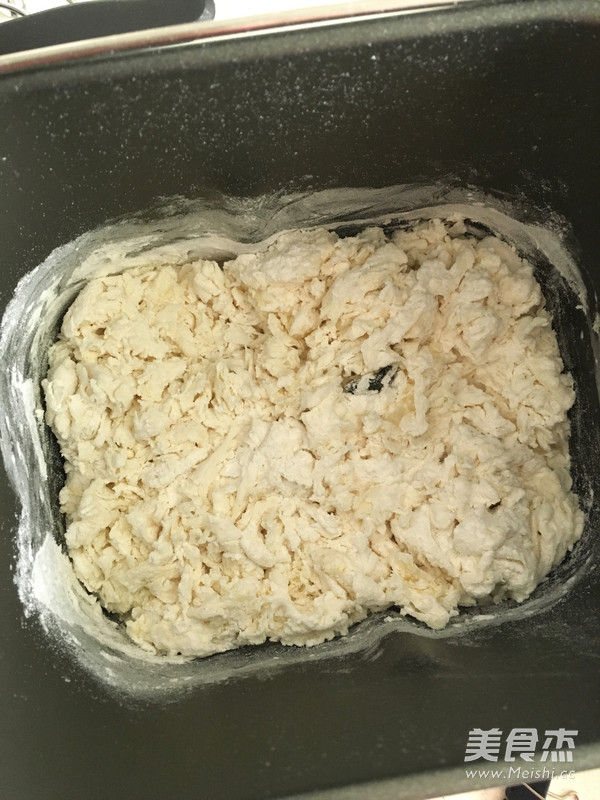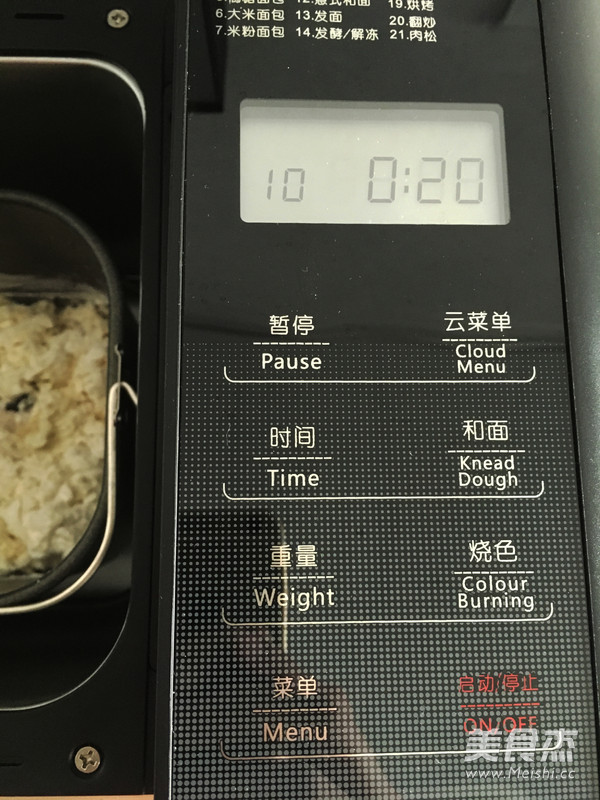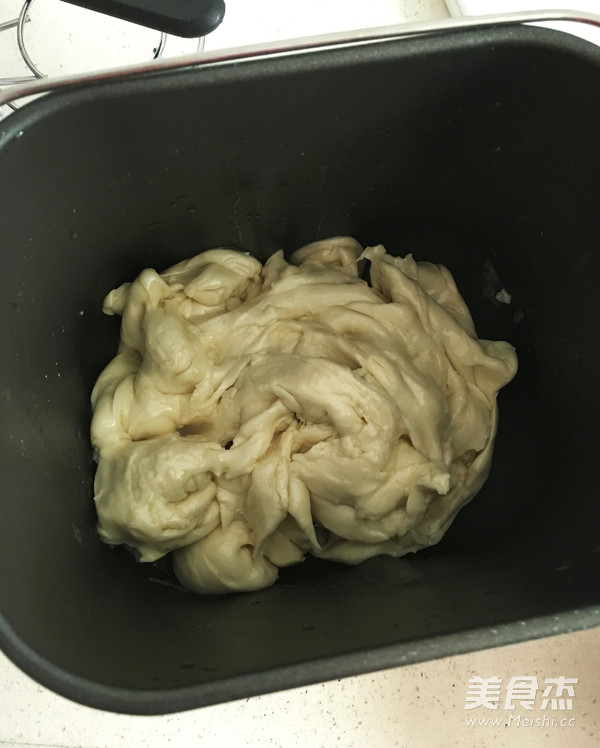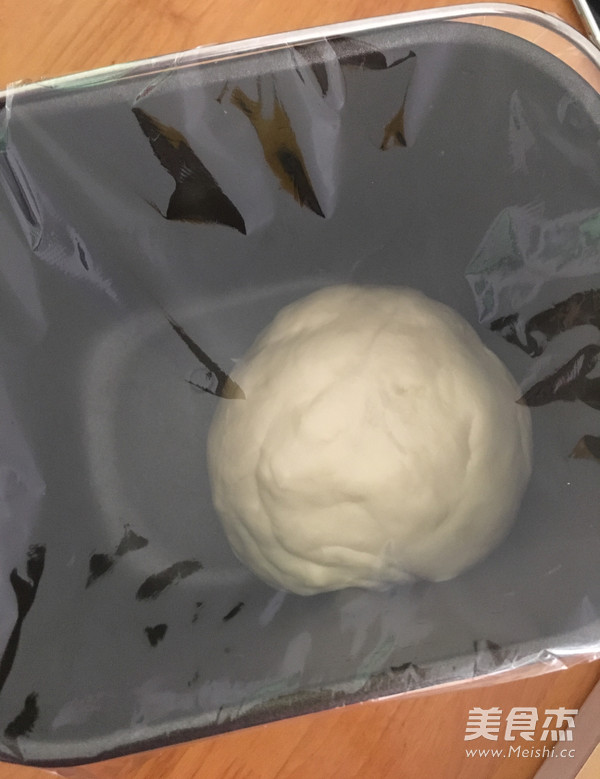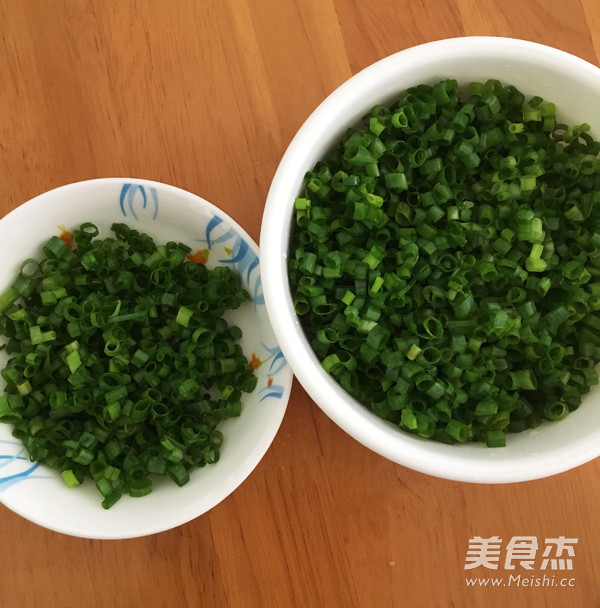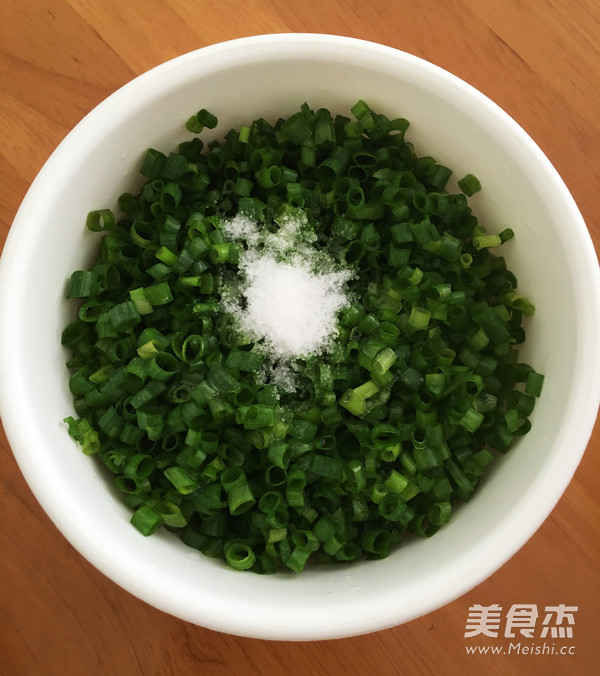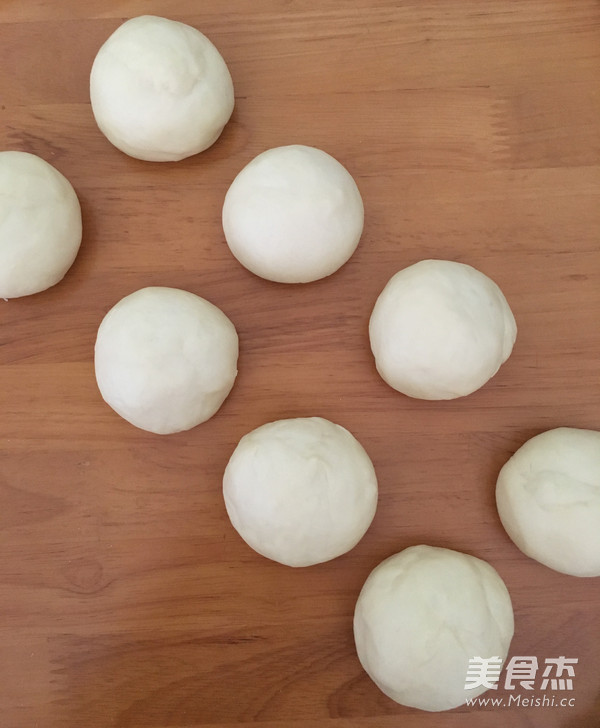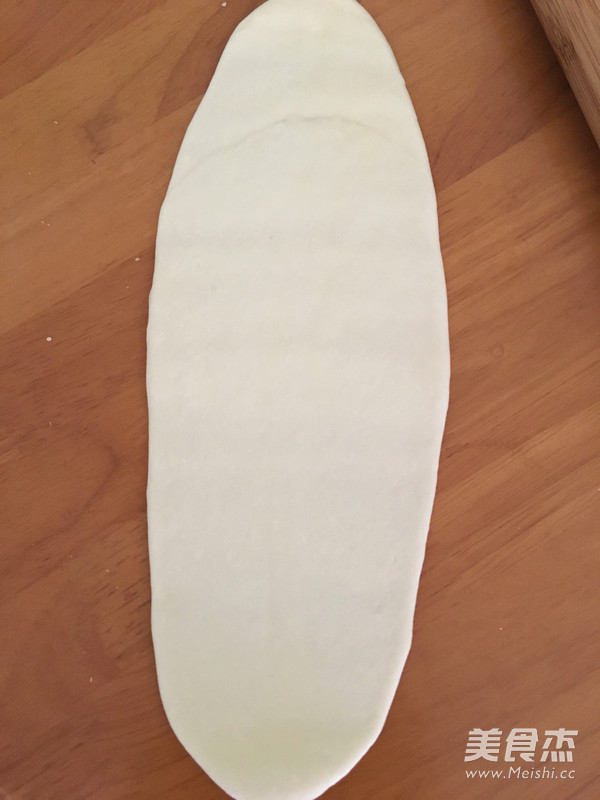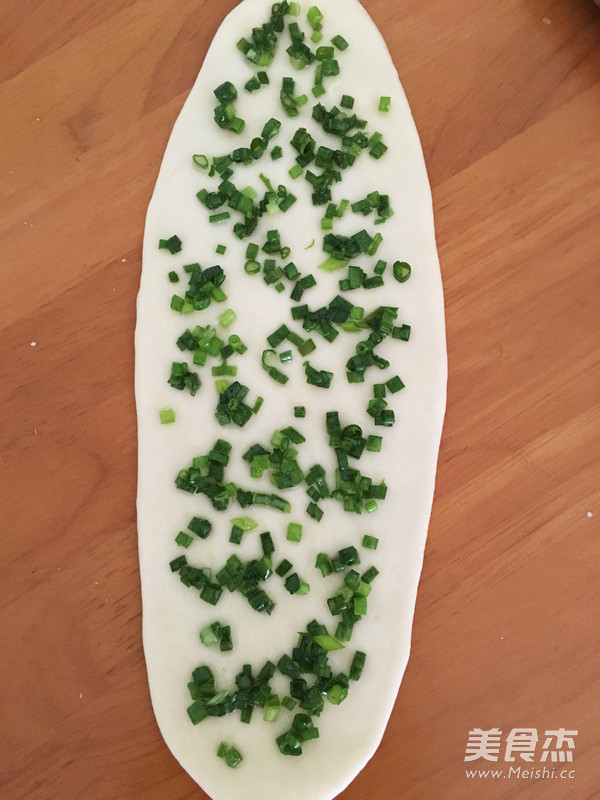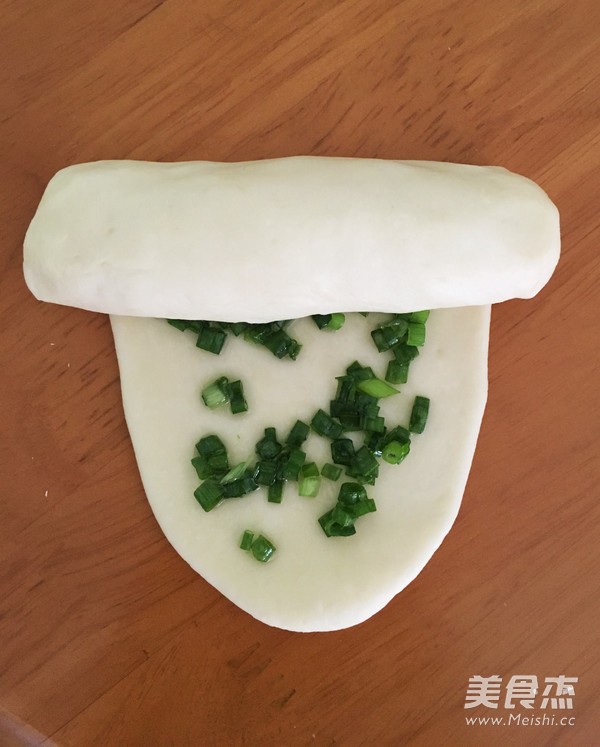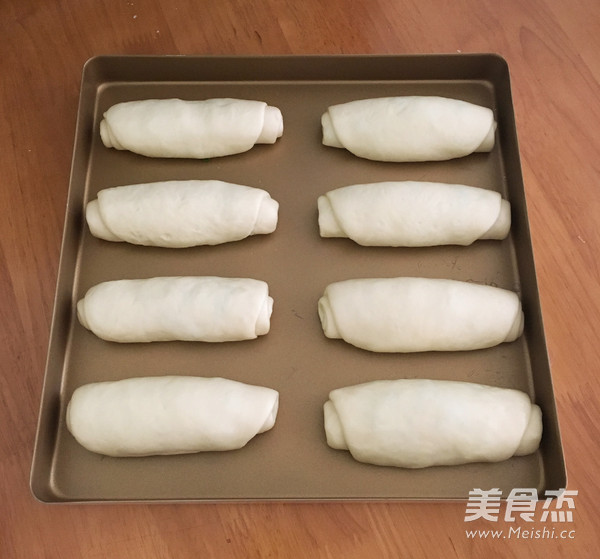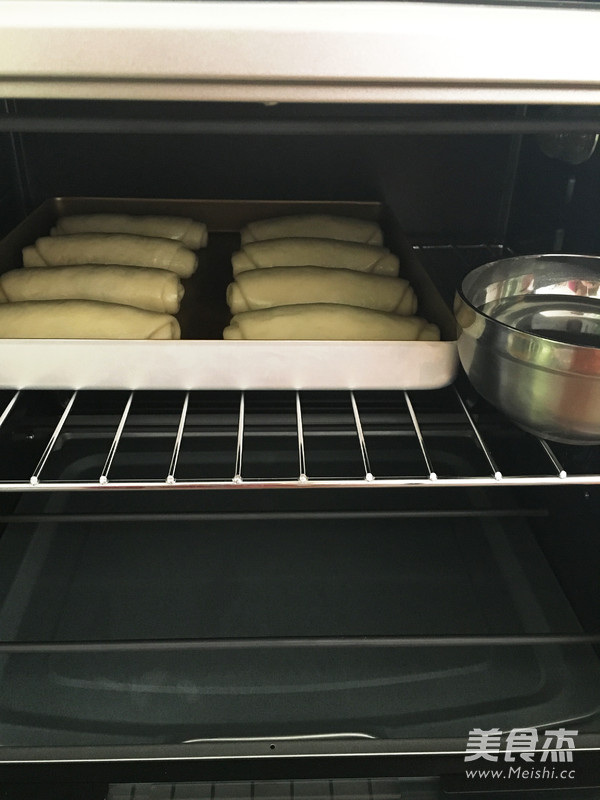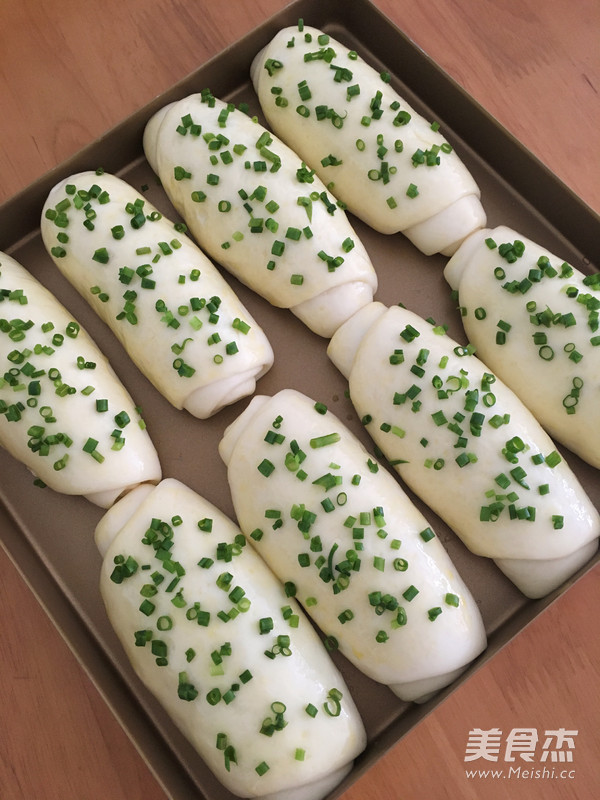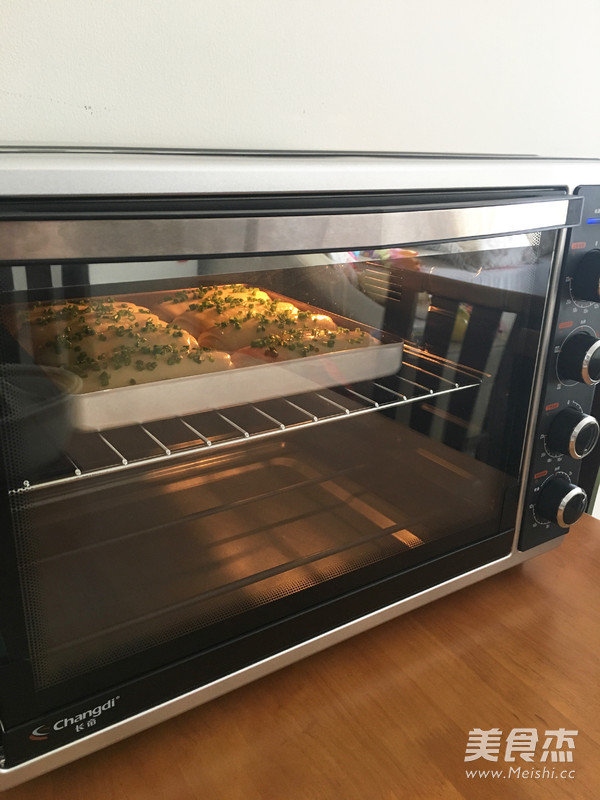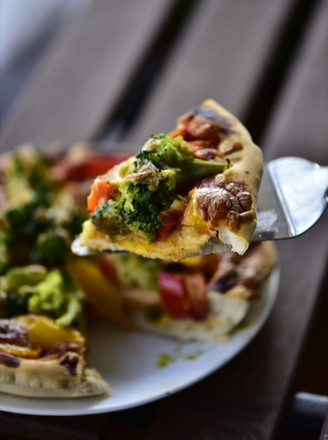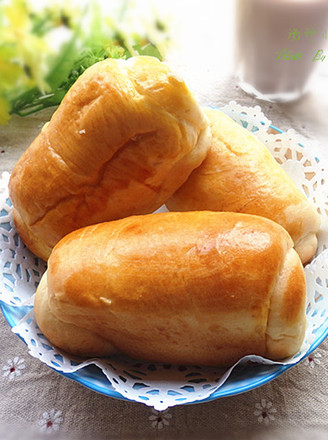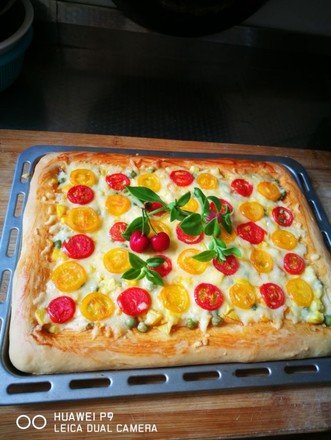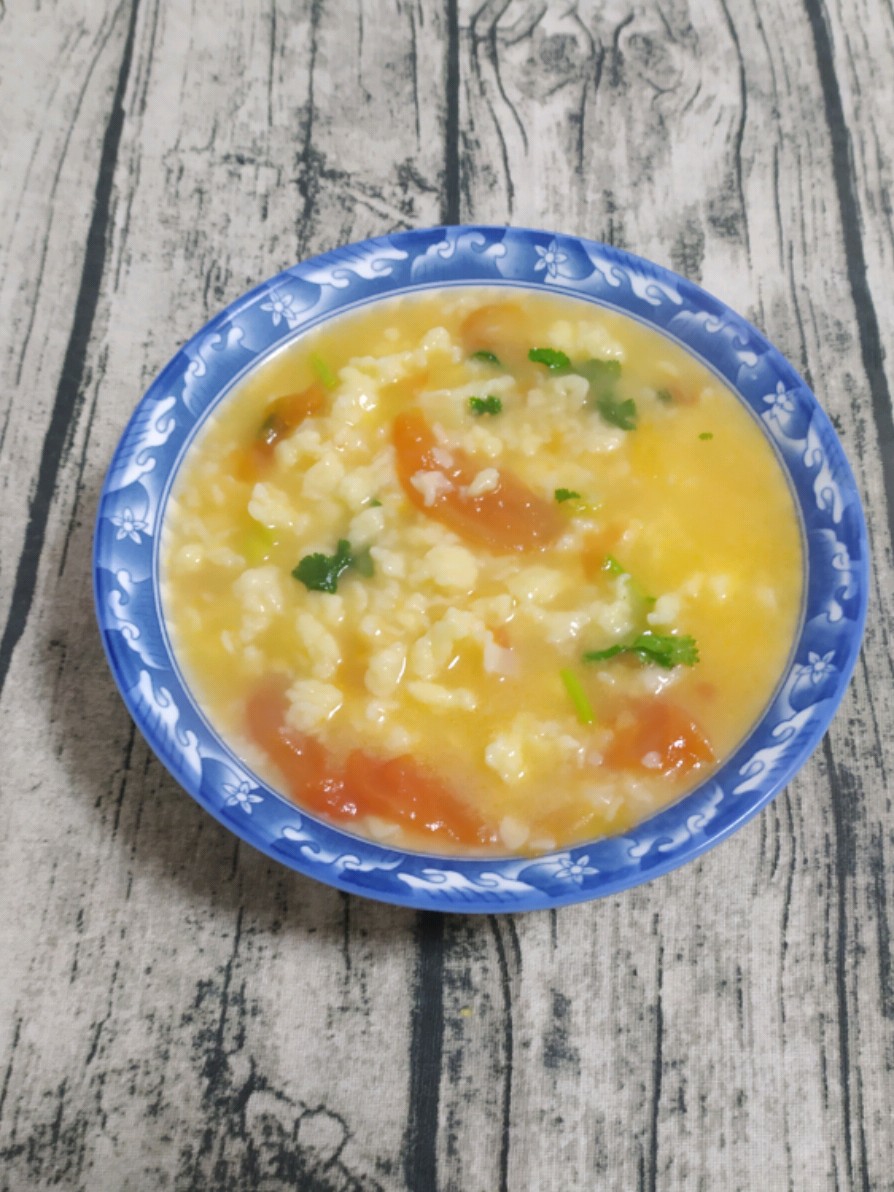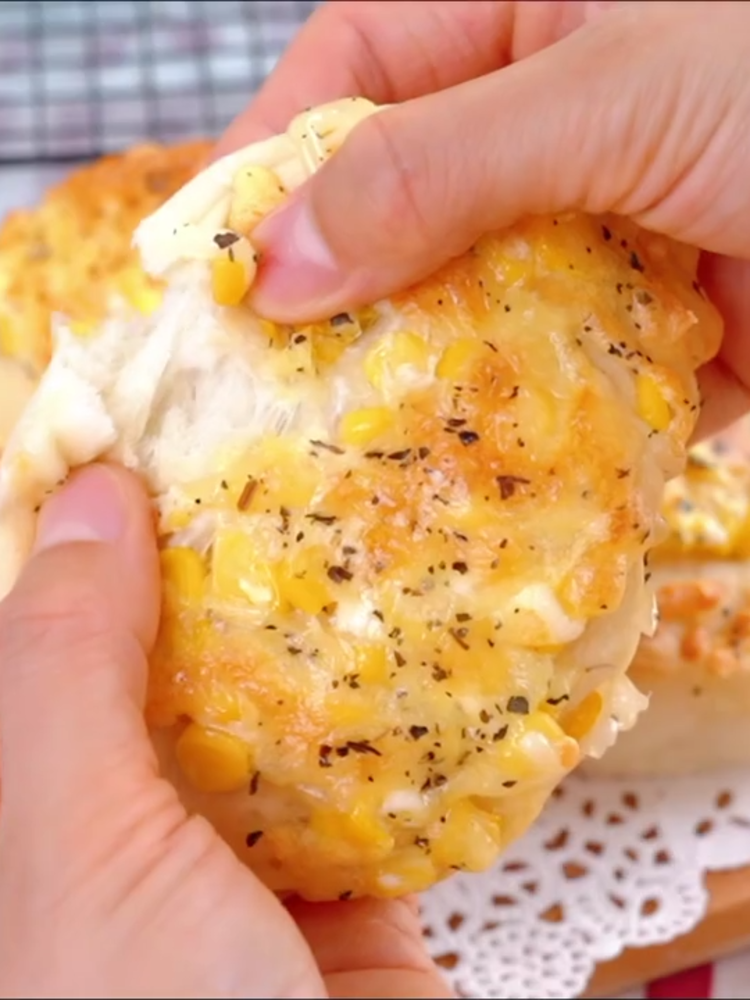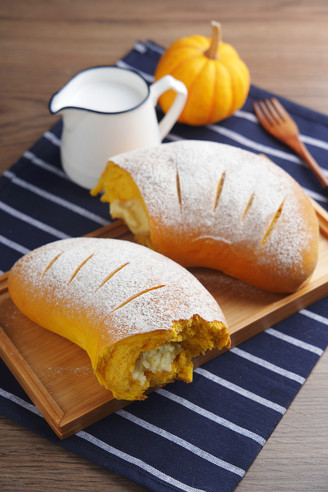Scallion Bread
1.
Put all the ingredients for making the noodles except the yeast and butter into the bread bucket, and stir evenly with chopsticks. Because the amount of salt used this time is more, the yeast will be added later.
2.
Put the bread bucket into the bread machine and start the first dough mixing program for 20 minutes.
3.
After the first kneading procedure is over, lift the bread bucket out, add the yeast and mix, then add corn oil, knead it by hand until roughly mixed, and put the bread bucket in the bread machine again, because the oil and noodles will not mix very well. It is even, so it is best to cover the surface with a towel or newspaper and start the second kneading procedure again for 20 minutes.
4.
Knead to the expansion stage. That is, a small piece of dough can be stretched to form a light-transmitting film, but the film strength is average. If it is broken, the shape of the edge of the break is irregular and similar to jagged.
5.
Knead the dough into a round shape, still put it in the bread bucket, cover it with plastic wrap, and let it stand for 20 minutes.
6.
Wash the chives and dry them, chop them, and divide them into two portions: 40+10.
7.
Pour 40 grams of chives for stuffing into corn oil and salt, mix well and set aside.
8.
Take out the proofed dough and vent it thoroughly, round it, divide it into the required amount, and remember to cover it with plastic wrap.
9.
Roll out the dough into a tongue shape.
10.
Spread the chives evenly.
11.
Roll up from one end to the other, and put the shaped dough into the baking tray.
12.
Shape all the dough as above.
13.
Put the baking dish in the oven, put a bowl of hot water next to it to moisturize, close the oven door, and ferment to double its size.
14.
The fermented dough is brushed with egg mixture and sprinkled with chopped green onions.
15.
Preheat the oven up and down at 160 degrees. After preheating, put the baking tray into the upper middle of the oven and set the time to about 25 minutes. The temperature of each oven is different, please set the time and temperature according to your own oven temperament.
16.
Finished product. The surface of freshly baked bread is crispy and very fragrant.

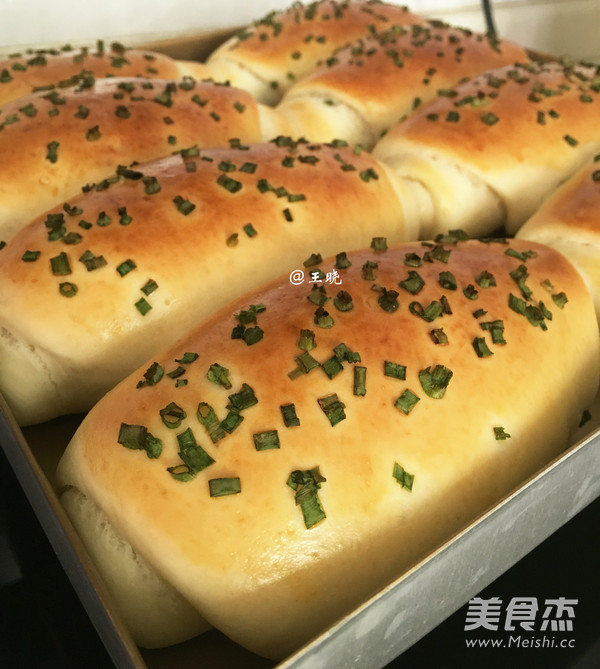
Tips:
1. This kind of bread is salty and contains a lot of salt, so in order for the yeast to work better, the yeast must be added after the first procedure is completed.
2. The water absorption of each type of flour is different. You should adjust the dough humidity according to your own flour.
3. The degree of gluten up of each type of flour is also different. You should adjust the kneading time according to different flours. Generally, for sweet bread, you only need to knead to the expansion stage, not to the complete stage.
4. It is important to make bread and kneading, fermentation is important, and proofing and exhausting are equally important. Although the production of this bread saves a fermentation, it is necessary to wake up and exhaust after kneading the dough.
5. As long as the dough is kneaded in place, the proofing, exhausting, fermentation process and moisturizing work are in place, even if only one fermentation is used, it is not difficult to make soft bread.


